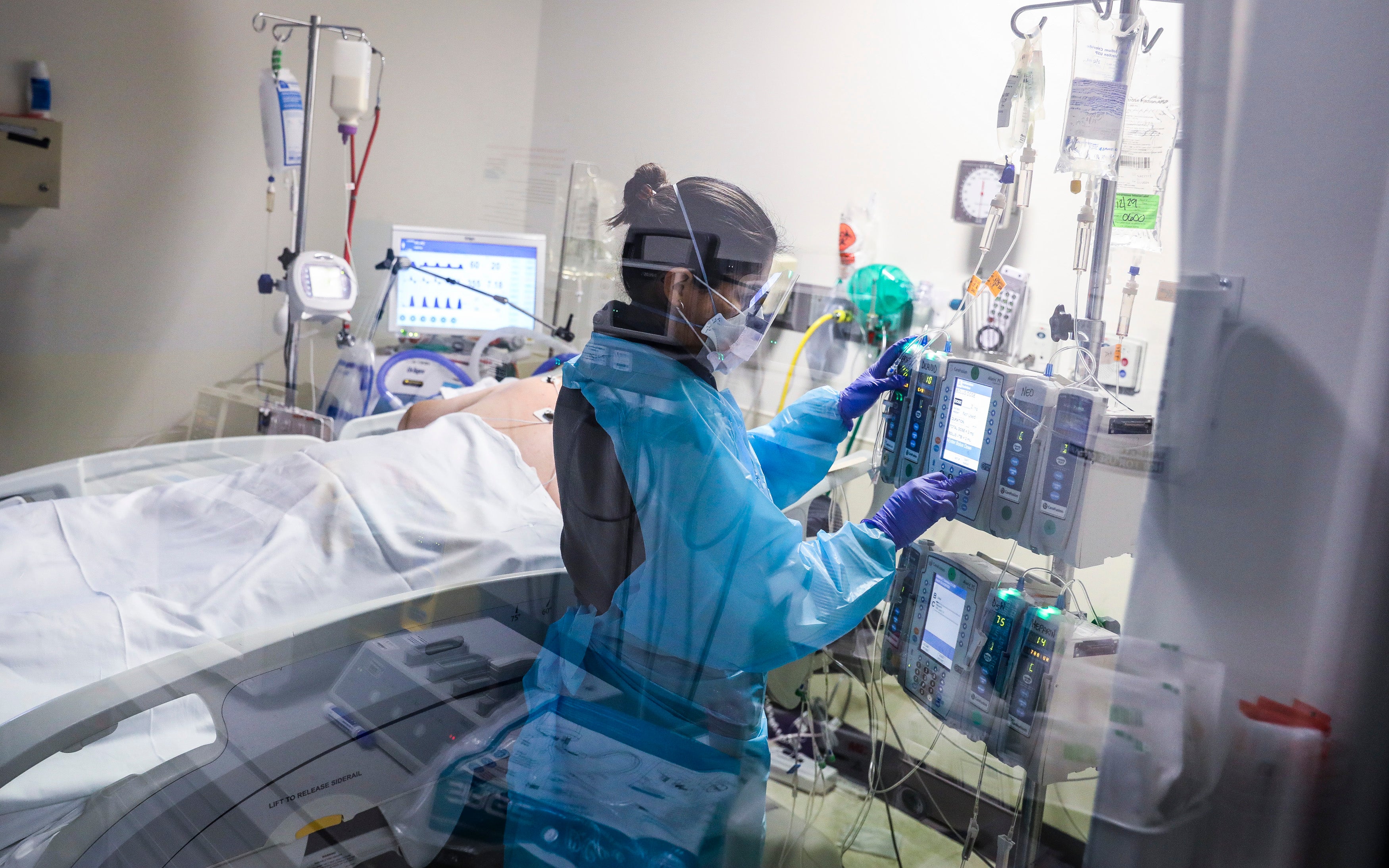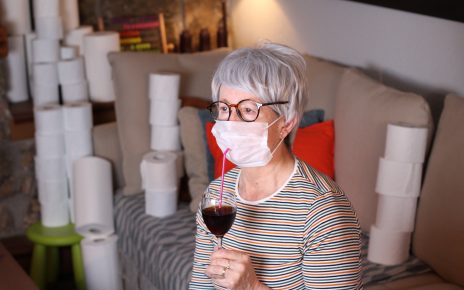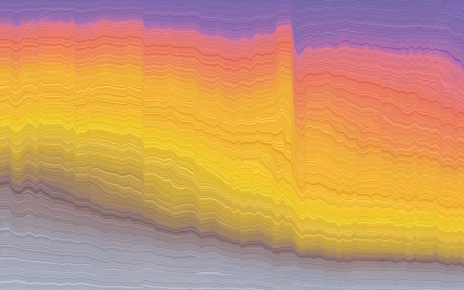
Reinfections with SARS-CoV-2, the virus that causes the disease, are on the rise, dashing hopes that vaccination or prior disease confers long-lasting immunity to infection. As more people get reinfected, they may be wondering: Do repeat infections lead to more severe COVID symptoms?
Evidence is still limited, but the available data show that while most reinfected people recover within a few days, “others are having a much rougher time,” says Josh Fessel, a pulmonologist at the National Center for Advancing Translational Sciences, in Bethesda, Md. Evaluating the impacts of reinfection—especially with new viral variants arising that are successively more contagious—is an urgent priority, Fessel and other experts say.
The first study of health risks from repeat infections was published last November. A team of researchers led by Ziyad Al-Aly, a clinical epidemiologist at Washington University, in St. Louis, and his colleagues concluded that reinfected people are twice as likely to die and three times as likely to be hospitalized with COVID than those infected only once, regardless of their vaccination status. Al-Aly’s team reviewed data from nearly half a million COVID patients treated by the U.S. Department of Veterans Affairs (VA) between March 2020 and April 2022. Among them, roughly 10 percent had been infected with SARS-CoV-2 between two and four times. Some patients continued to have symptoms during the six months of follow-up, Al-Aly says, and the severity of a patient’s disease typically worsened with each new COVID episode.
Given those findings, Al-Aly emphasizes that repeat infections are “consequential both in the acute and long COVID phase.” But his results also have important caveats: the VA patients were mostly older males, averaging 63 years in age, and many had preexisting health problems, including heart disease—all factors that can independently worsen COVID outcomes, Al-Aly says.
“This study’s findings were unanticipated,” says Stanley Perlman, a microbiologist at the University of Iowa’s Roy J. and Lucille A. Carver College of Medicine, in Iowa City, who was not involved in the study. “We would have expected repeat disease to be milder because of immunity from the first infection. Perlman emphasizes that Al-Aly’s results still need to be validated in other populations, and that more research on reinfections is needed, especially among vaccinated people exposed to newer variants. Most hospitalizations and deaths from COVID are occurring among the elderly and in unvaccinated or immunocompromised people, Perlman says. But for people outside those groups, “I think most subsequent infections are milder than the initial ones,” he speculates, but he cautions that there could be unexpected immunological effects occurring that scientists do not understand.
Yet recent data reinforce Al-Aly’s evidence that repeat infections can be severe, while providing new insights into what heightens risks for vulnerable people. A preprint study posted in January (which has not yet been peer-reviewed), for instance, reported that the severity of a person’s initial bout with COVID predicts how severe the disease might be should it strike again. The investigators in this case reviewed electronic health records from a more diverse population of 1.5 million COVID patients treated at U.S. hospitals between March 1, 2020 and July 1, 2022. Nearly 6 percent of these individuals had been infected more than once, and in most cases, the reinfections occurred when the original Omicron variant was spreading (November 2021 to mid-March 2022).
Among those hospitalized with severe COVID the first time around, nearly half were hospitalized again when reinfected. Conversely, roughly 90 percent of people with mild initial infections avoided hospitalization when sickened again with COVID later. Notably, the investigators found that reinfections were also associated with elevated risks of long COVID—lingering symptoms such as fatigue, shortness of breath and brain fog that persist months or years after an initial infection. But the basis for that trend is unclear. There could be biological factors at play, or maybe “doctors are simply documenting a backlog of long COVID with the new diagnostic code, which became available in late 2021,” says Emily Hadley, a data scientist at RTI International, a nonprofit research institute in Durham, N.C., and the study’s first author.
“It is hard to attribute a long COVID diagnosis that occurs after a reinfection to just one prior infection or to a combination of the two,” adds Richard Moffitt, a bioinformatics specialist at Emory University’s Winship Cancer Institute, in Atlanta, and one of Hadley’s co-authors. “And it is even harder to disambiguate two distinct long-covid diagnoses from one continuous experience.”
That the severity of an initial infection would, in turn, predict the severity of future COVID episodes makes physiological sense, says Ralph Baric, a virologist at the University of North Carolina (UNC), in Chapel Hill. “Repeat infections in the heart can induce myocarditis”—inflammation of the heart—“which has the potential to [produce] blood clots,” he says. “If the clots accumulate in various organs, they cause hypoxia [low oxygen in tissues] that can become a problem especially for elderly patients.” Moreover, genetic risks for severe COVID and certain types of chronic lung disease, such as the lung-scarring illness pulmonary fibrosis, overlap with each other, Baric says, “and if that genetic component keeps getting stimulated by repeat infections, then you might wind up with long-term problems.”
Richard Boucher, a pulmonologist at the UNC School of Medicine, agrees that people with widespread lung scarring face especially high risks from reinfection. “You worry about it in patients who had COVID and were left with severe pulmonary disease for months and months,” he says. “These patients are already behind the eight ball. You don’t want the virus to kick them again and add to the fibrosis they already have.”
But new data also point to a promising development. SARS-CoV-2 is particularly dangerous when it settles in the lungs and causes systemic problems, such as fever, cough and shortness of breath. Early COVID variants often invaded the lungs, yet a recently posted preprint by scientists in Japan reports that in people who are vaccinated or previously sickened with COVID, reinfection by Omicron subvariants tends to mostly affect the nose and upper airways. The antiviral immune attack generates uncomfortable symptoms, but they also tend to resolve quickly. Citing these data, Boucher says these findings help to confirm that even though vaccination will not prevent reinfection or an upper airway illness, “it can help to protect you from far more troublesome systemic infections and bad outcomes, such as the need for mechanical ventilation, or death.” Moreover, since vaccines blunt the severity of initial COVID infections, by extension, they should limit the severity of future infections as well, says Moffitt.
“Reinfections are happening,” Moffitt says. “Most people have had just one, but a minority of people are being reinfected multiple times, and we expect their numbers will increase.”
Editor’s Note (2/15/23): This story has been updated to correct a misspelling in Ziyad Al-Aly’s name. We regret the error.



